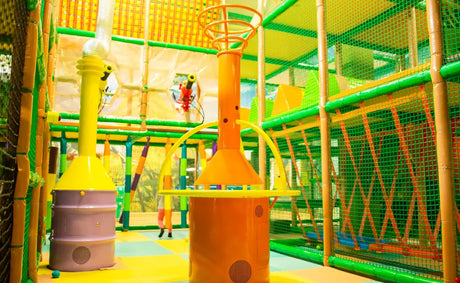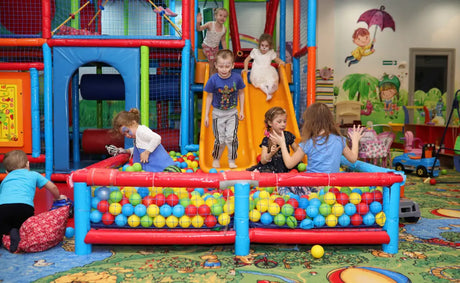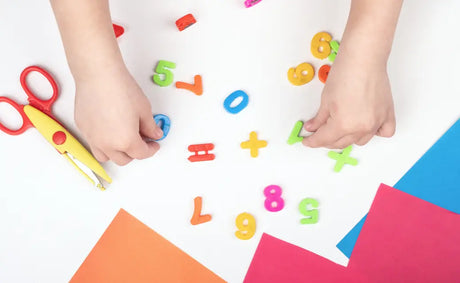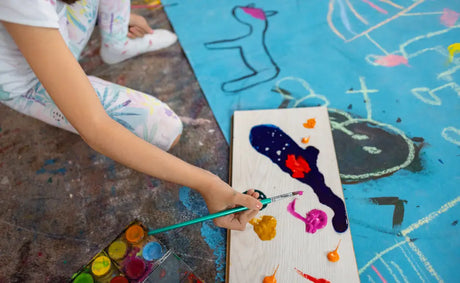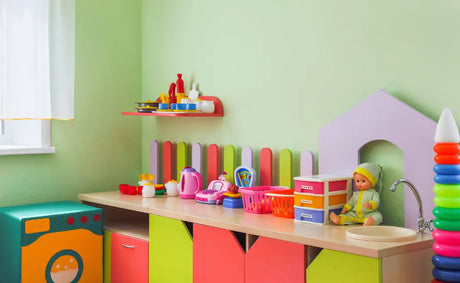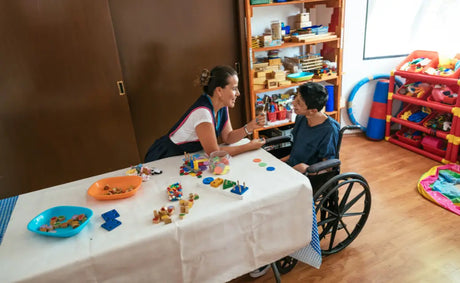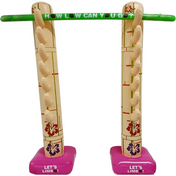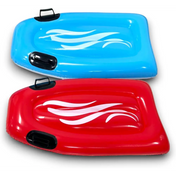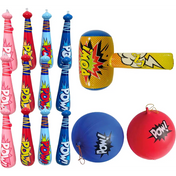Starting a new school year is an exciting time, but it can also come with its own set of challenges. One of the most crucial factors for a successful academic experience is staying organized. Keeping your school supplies organized can help you be more productive and less stressed.
When your school supplies are organized, it’s easier to find what you need, which helps you get your work done faster and with less stress. A tidy space also reduces distractions and makes studying and doing homework more efficient. Being organized means you're less likely to feel overwhelmed, which makes for a better learning experience.
Disorganization can lead to problems like losing items, which can be frustrating and waste time. It can also cause missed deadlines and incomplete assignments. Families often struggle to manage all the supplies needed for school, like notebooks, pencils, and textbooks. Addressing these issues early can help keep the school year running smoothly.
In this blog, we’ll cover practical steps to help you stay organized with your new school supplies for an effective academic experience.
Step 1: Clean Out and Declutter
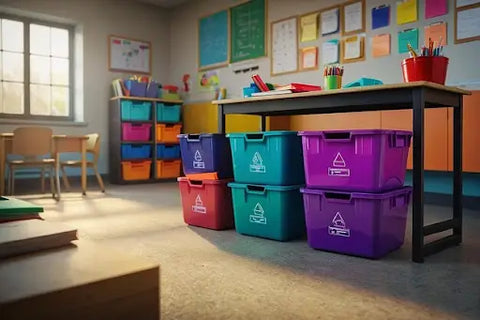
Before diving into organizing your new school supplies, it’s essential to start with a clean slate. Begin by going through all existing supplies to assess their condition. Discard any items that are damaged, worn out, or no longer usable. This could include broken pencils, worn-out notebooks, or old markers that have dried up. For items that are still in good condition but no longer needed, consider donating them to local schools, charities, or community centers. This step not only clears out clutter but also helps others in need.
Sorting Tips: To effectively sort through your supplies, follow these simple strategies:
- Categorize Group items into categories such as writing tools, notebooks, folders, and art supplies. This helps you see what you have and identify duplicates or items you no longer need.
- Assess Condition: Check each item’s usability. If it’s still functional, set it aside to keep; if not, place it in the discard pile.
- Decide What to Keep: Determine which supplies are essential for the upcoming school year and will be used regularly. Prioritize these items and make a list to ensure you have everything necessary.
- Toss or Donate: For items that are outdated or surplus, decide whether they should be tossed or donated. Keeping only what’s needed and in good condition will make your organization process smoother.

Step 2: Stock Up
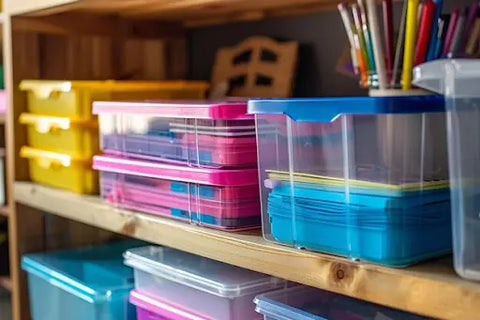
Creating a Supply List: One of the most effective ways to stay organized with new school supplies is to start with a comprehensive supply list. A well-prepared list ensures that you have all the necessary items without forgetting any essentials. Take the time to review your child's school requirements, which are often provided by teachers, and create a detailed list. This will help you track what you already have, and what needs to be purchased, and prevent any last-minute scrambles.
Bulk Purchasing: Consider buying school supplies in bulk to save money and reduce the frequency of shopping trips. Stocking up on these essentials not only helps you save on costs but also ensures that you always have a backup when supplies run low. Look for deals and discounts at local stores or online to make the most of bulk buying.
Age-Appropriate Supplies: Different ages need different school supplies. Younger kids might need crayons, markers, and simple notebooks for their early lessons. Older students will need things like calculators, binders, and special pens. Make sure to choose supplies that fit your child’s age and grade level so they have what they need to do well in school. Knowing what each age group requires helps you support their learning better.
Step 3: Organize Supplies
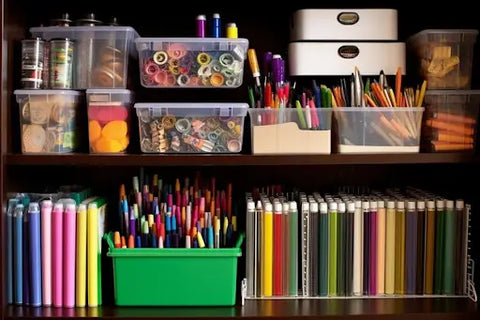
Categorization: To keep school supplies organized and easily accessible, start by categorizing items based on their type. Separate writing tools (like pencils, pens, and markers) from art supplies (such as crayons, glue, and scissors). Group similar items together to streamline your search and avoid the frustration of sifting through a jumble of supplies. This method not only makes it easier to find what you need but also helps you maintain an organized workspace.
Storage Solutions: Invest in practical storage solutions to keep supplies tidy and within reach. Labeled bins and drawers are excellent for categorizing and storing different types of supplies. For example, you can use clear plastic bins with labels for various categories like “Writing Tools,” “Art Supplies,” and “Paper.” The key is to choose storage solutions that fit your space and make it easy for both you and your child to find and return supplies.
Frequent vs. Infrequent Use: Arrange your storage to reflect how often supplies are used. Items that are frequently used, such as pencils, erasers, and everyday notebooks, should be kept within easy reach—perhaps in a desktop caddy or an accessible drawer. Less frequently used items, like extra folders or special art supplies, can be stored in a more out-of-the-way location. This approach not only keeps the workspace clutter-free but also ensures that essential items are always available when needed.
Step 4: Create a Supply Station
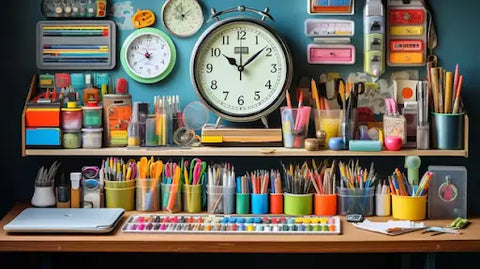
Set Up a Space: Establishing a dedicated area for school supplies is a key step in maintaining organization and efficiency. Choose a specific spot in your home, such as a corner of a room or a designated desk area, where all school supplies will be kept. This central location should be easily accessible to your child and provide enough space to store all their supplies neatly.
Personalize It: Personalizing the supply station can make it more engaging and enjoyable for your child. Use labels to identify different storage bins and drawers, which helps keep everything organized and easy to find. Adding decorative elements that reflect your child’s interests, such as themed stickers or colorful organizers, can make the space more inviting and tailored to their personality. Personal touches not only enhance the appeal of the supply station but also encourage your child to take ownership of their workspace.
Home Office Setup: For older kids, consider setting up a mini home office. Include a desk, a comfy chair, and storage like file cabinets or desk organizers. Adding a desk lamp, a bulletin board, or a calendar can help them build good study habits and manage their time better.
Step 5: Plan for Emergencies
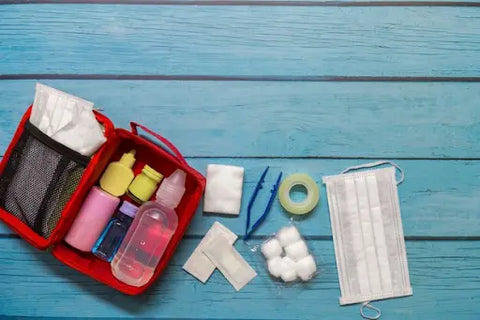
Emergency Supplies: It’s crucial to be prepared for unexpected situations where school supplies may be needed urgently. Keeping a small stash of extra supplies in easily accessible locations, such as your car or a secondary backpack, can be a lifesaver. This way, you’re equipped to handle last-minute needs without disrupting your daily routine. Having these emergency supplies ensures that you're not scrambling to replace missing items or deal with unplanned shortages, especially during busy school periods.
Preparedness Tips: To create an effective emergency kit, include essential items that cover a range of common scenarios. Here’s what to consider:
- Basic Stationery: Pack extra pens, pencils, erasers, and a small notebook. These are often the items that get lost or run out first.
- Personal Hygiene Items: Include a few tissues, hand sanitizer, and perhaps a small pack of wet wipes. These are useful for handling spills or maintaining cleanliness throughout the day.
- Snacks: Keep a couple of non-perishable snacks, such as granola bars or crackers, in your emergency kit. These can be handy if your child needs a quick bite during unexpected situations.
- Spare Supplies: Store backup items like a spare folder, a few sheets of paper, and a glue stick. These can address various last-minute needs that might arise.
Additional Tips for Multiple Kids
Color-Coding and Labeling: Managing school supplies for multiple children can be streamlined by using color-coding and personalized labels. Assign each child a specific color for their supplies—such as red for one child and blue for another—and use this color scheme on notebooks, folders, and storage bins. Personalized labels with each child’s name can further prevent mix-ups. This approach not only helps avoid confusion but also makes it easier for your children to identify their supplies quickly.
Separate Storage Solutions: To keep supplies organized and minimize disputes, invest in separate storage solutions for each child. Individual bins, carts, or shelves can be designated for each child’s school supplies. This way, every child has their own dedicated space for their items, which helps maintain order and ensures that supplies are easily accessible. For instance, you might use a cart with multiple tiers, each tier labeled with the child’s name, or individual bins stored on separate shelves. This method keeps each child’s supplies distinct and reduces the likelihood of items getting mixed up.
Conclusion
Keeping your school supplies organized has many benefits. It reduces stress by preventing the frustration of losing items and searching for them at the last minute. It also makes it easier to find what you need and stay focused on schoolwork. Using strategies like sorting supplies, setting up a dedicated space, and planning for emergencies can create a more organized and less stressful environment.
If you have extra supplies or seasonal items and need more space, consider using storage solutions like Self Storage Plus. These services help keep your extra supplies secure and easy to access, so your organization system stays in good shape all year.



